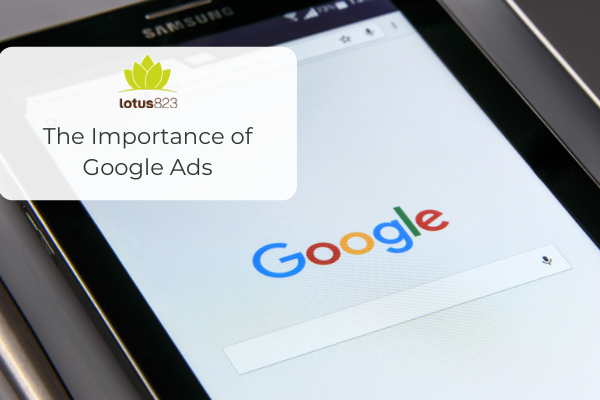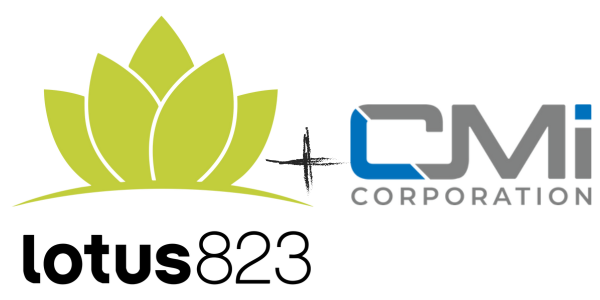
The marketing world has changed dramatically in recent years, and Google Ads is one platform that has been driving this transformation. Formerly known as Google Adwords, Google Ads is a Pay Per Click (PPC) platform that allows business owners or marketing professionals to advertise their brand on the web. By advertising on a platform where there are over 259 million unique visitors, 4.8 billion daily interactions, and over 5 billion search queries a day, there is no denying that Google Ads can help you reach your goals. Read on for a closer look at why you should use Google Ads and how to effectively utilize the platform to work for your business!
What Are Google Ads?
Almost every time you see an ad for a company’s landing page or product rank as the first, second, or third search result on a Google, is not just the result of good SEO, but likely a Google Ads campaign. Through Google Ads, a company pays to have an ad displayed to customers who search for relevant terms on Google Search and Maps. Once the company sets a monthly ad campaign, they can set an ad-spend cap that Google will follow, as well as choose target audiences globally or locally. This digital marketing tool is a great way for any business to get meaningful messaging in front of their target audiences. As the campaign is running, you’re provided with measurable results, such as website clicks.
Types of Google Ads
Search Campaign
Search campaigns are exactly what they sound like. Google Search Campaigns allow marketers and brands to run text ads placed across Google and are shown to people searching for specific items or products. When creating a search campaign, brands and marketers create text ads based on what they’d like to be searched for. For example, if a brand that sold audio-based products wanted to run a search campaign for a specific item, like headphones, the search campaign would be created to target users searching for headphones or headphone-related products.
Keywords Are Key
When developing your search ad campaign, it is important to create a keyword list. Keywords are words and phrases that best describe your product or service that you choose to help determine when and where your ad appears. You should select high-quality, relevant keywords for your campaign to help you reach interested customers, and match related ad sites.
In addition, you can add match types to your keywords, which help control certain searches that your ads can be matched with. Overall, a great list of keywords can help your business perform better and help you avoid higher prices. Poor keywords result in higher prices and lower ad position.
While compiling a list of keywords that help lead potential customers to your products, services, and website is key, using negative keywords helps you narrow this search even further. Negative keywords let you exclude search terms from your campaigns and help you focus on only the keywords that matter to your customers.
When selecting negative keywords for your ad campaign, it is beneficial to look for search terms that are similar to your keywords but cater to customers searching for a different product or service. For example, if your business sells eyeglasses, your negative keywords may be “wine glasses” or “drinking glasses”. Those terms seem similar to your product, but you would not want your eyeglasses to show up in a search for someone looking to buy a wine glass. Negative keywords allow you to narrow down your ads to reach interested customers, but it is important to be strategic when choosing them so that you do not reach too few customers.
Display Campaign
The Display Network leverages Google’s vast website partners to showcase ads on different websites all over the Internet. Your business’ ad can appear on third-party websites, at the top of a webpage, in the sidebar, or even as a pre-roll before YouTube videos. Google also includes capabilities for ads to appear on Gmail, its email platform, and within different mobile apps.
Display ads offer many benefits to businesses. For one, Google partners with millions of websites and reaches more than 90% of all Internet users, which helps to ensure your business’ ads get in front of the most eyes as possible. An added benefit of display ads is that they are flexible in terms of style and formatting, which provides variety and allows for A/B testing. Ads can be formatted for GIF, in text form, a video, or static image.
Not only do display ads offer different styling and formatting, but there are also a variety of types of display ads:
- Shopping campaign
- A shopping campaign allows retailers to promote their products and inventory in a much more visual way, as well as boost traffic. Referring back to the headphones example, if someone searches the word “headphones”, your Shopping Campaign could appear within the search results page of the specific item of your choosing. Shopping campaigns provide more details than a text-based or search ad. For example, shopping ads provide additional details like product image, price, title, and store name. Because shopping ads provide more detail, the retailer is able to secure more qualified leads, as the consumers know and understand exactly what they are clicking.
- Video Campaign
- Video ads are those that appear within a YouTube video page, or in the form of pre-rolls before you’re able to watch the desired video. Although these may seem similar to display ads, Google offers the option of choosing video ads specifically, rather than more broadly advertising on the Display Network. These ads can appear as skippable pre-roll ads, ones that appear after entering a search on YouTube’s platform, or in overlaying banners.
- Video Action Campaign
- Video action campaigns drive more conversions while optimizing for the lowest CPA. These generate multiple ad combinations that show to the right people in the most relevant ad formats.
- TrueView for Action Campaign
- TrueView for action campaigns ad calls-to-action, headline text overlays, and an end screen to video ads which help marketers drive more traffic to specific areas, like product pages or websites.
- TrueView for Reach Campaign
- TrueView for Reach helps advertisers reach viewers on YouTube and across the web using skippable in-stream ads. These specific ads are designed or optimized to deliver a more unique reach, using Target CPM bidding for a lower cost.
- TrueView for Shopping Campaign
- To utilize TrueView for shopping campaigns, a brand must have a Google Merchant activates as it uses a brand’s Google Merchant product data to make ads, like shopping cards, which can appear on video ads.
- Video Campaigns with Bumper Ads
- In comparison to the other video ads, Bumper ads are short videos with brief messaging about your brand. These ads also do not allow viewers to skip the video, so messaging in these ads should be memorable.
- Video Ad Sequence Campaign
- These ads drive deeper awareness of your product or service by selecting the “Product and brand consideration” and “brand awareness and reach” goals in Google Ads.
- Outstream Video Campaign
- Designed specifically for mobile and tablets, Outstream mobile-only ads are a great tool for increasing awareness. These ads can appear outside of YouTube and on additional partner sites.
App Campaign
Like video ads, app ads are also included in the Display Network but can be used for targeted campaigns. For these, apps generate your text and assets and furnish the ad for you. The algorithm tests different combinations of these and uses the ones that perform the best more often. App campaigns truly streamline the ad process for you, making it easy to promote your apps across Google’s largest properties including Search, Google Play, YouTube, Discover on Google Search, and the Google Display Network
The best part about Google Ads is that you have the freedom to test and choose what works best for your business through trial and error. Each of these listed ad variations can help businesses reach their goals, depending on the kind of attention the business wants to attract, the business’ budget, and what products/services they offer.
How Do Google Ads Work?
Now that you know what Google Ads are and the kinds of campaigns available, you may be wondering how they work. First, when a company embarks on a Google Ads campaign, they have to outline which of the following three goals they’re aiming to achieve:
- Increasing calls to business
- Directing more visitors to your store
- Guiding people to your website or landing page
Secondly, the company will have to determine whether the ad copy will be delivered globally or to select local audiences. The next step is to tell Google what makes this business unique by providing Google with images or three short sentences. From these sentences, Google will help to create the ad copy. Finally, you will set your budget which Google will use to predict the campaign’s success, and then it’ll go live! With enough time and testing, and as more people click on the PPC campaign ads, your business will come closer to fulfilling its preset budget. Not only will you reach your budget, but the more clicks your PPC campaign receives, your search result rank will also increase, getting you closer to that top search spot on Google.
How Much Do I Need to Invest?
The average cost-per-click in the United States is between $1 to $2. However, the cost of your specific Google Ad is dependent on a number of factors, including the quality of your business’ website and how much you’re bidding. This is where the Ad Auction system comes into play! To put it simply, Google’s Ad Auction and Ad Rank system are not dependent on businesses with the largest ad budget. What places ads higher up on a webpage, or makes Google favor them, is whichever website helps users most. With a good website and good-quality ad, your business may see better results than those with higher budgets and CPC.
Why Should My Business Use Them?
With mobile and desktop capabilities, Google Ads is an effective way to drive good-fit traffic to your business by optimizing your products and services in Google, at the moment ideal customers are making similar searches. With the right campaign, a business can see a boost in website traffic, increased call volume, and a surge in in-store visits.
Over time, businesses can also utilize the data Google Ads provides to analyze and improve campaigns so that they are reaching more people and hitting all of their goals. No matter the size of the business or available resources, ads can be tailored to suit any budget, and spending can be paused or stopped at any time.
Not only this, but there are hundreds of companies using Google Ads to promote their business, making it imperative that businesses develop campaigns to get ahead of their competitors. Here are some added benefits of using Google Ads in your business’ digital marketing strategy:
- Increased Leads and Customers
- Google Ads is one of the best tools for lead generation. If your campaigns are set up properly, it has the potential to send extremely targeted and qualified leads to your website, opt-in form, or another online property. Google Ads also allows a business to focus on the people who are searching specifically for what they want. This means your business’ searches can be continually refined so that only people who want to buy your products or services are sent to your websites through this platform.
- Potential for a High ROI
- Unlike other marketing strategies, Google Ads makes advertisers pay only for ads people click on. Once you optimize your Google Ads campaigns, you can get a high return on investment (ROI), which you may not have seen with other strategies. However, this takes time. To get a clearer picture of what will give your business the best results, you have to continually test and track your campaigns, which Google Ads is perfect for, as it provides all data necessary to calculate ROI, as well as ads clicked, keywords entered, and cost of clicks.
- Discover More About Your Market
- Understanding your audience makes it much easier to deal with customers and find out what they want. While this is usually difficult to do and requires a lot of research, Google Ads yields information about customer habits and requirements that business owners dream about. This includes data on keywords customers use to find your website, their location, devices they use, and times and days of the week they’re searching. You can use this information to change up your products and services or refine marketing efforts so that your budget is not wasted on advertising to people who are uninterested in your business.
With its reach and authority amongst other search engines, Google Ads is one of the most powerful advertising tools a business can use. From search campaigns to shopping ads, there are so many ways to create the best campaign for your business and its audiences. By taking advantage of all of the features Google Ads has to offer, there is no question that you can develop a successful marketing campaign for your business.
If you would like to learn more about how Google Ads can help your business, get in touch with us today to schedule a call with the lotus team.








